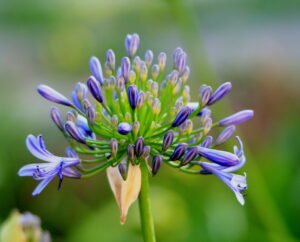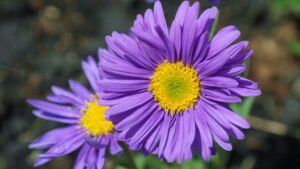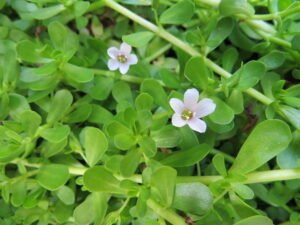How To Grow And Care For Wisteria Tree

Wisteria Trees.
The wisteria tree is a stunning and graceful addition to any garden or landscape. With its cascading clusters of fragrant flowers and lush green foliage, it is no wonder that this tree is highly sought after by garden enthusiasts and nature lovers alike. This article explains in detail how to grow and care for wisteria tree.

Symbolizing love, beauty, and eternity, the wisteria tree holds a special place in many cultures and traditions. In Japanese culture, it represents grace, honor, and the beauty of nature. In Chinese culture, it is a symbol of immortality and longevity. Regardless of the cultural significance, the wisteria tree is universally admired for its enchanting beauty.
Wisteria Trees Facts
There are several species of wisteria trees, but the most common ones include: 1. Wisteria sinensis: Also known as Chinese wisteria, this species is known for its showy, pendulous flowers that range in color from white to lavender-blue. 2. Wisteria floribunda: Commonly known as Japanese wisteria, this species produces long, hanging clusters of fragrant flowers in shades of purple, pink, and white. 3. Wisteria frutescens: Native to the United States, this species, also known as American wisteria, features shorter clusters of flowers in shades of blue, purple, and white.
Wisteria trees are known for their stunning beauty and fragrant blossoms, but many people wonder if these plants are toxic. If you have children or pets, it’s important to know if there are any potential risks associated with having a wisteria tree in your garden.
The good news is that wisteria trees are not considered highly toxic to humans or animals. While all parts of the plant contain substances that can cause mild stomach upset if ingested, severe poisoning is rare. However, it’s still important to exercise caution and prevent any accidental ingestion.
While wisteria trees are not classified as invasive in all regions, they do have the potential to become problematic in certain areas. Their rapid growth and ability to spread through seeds can lead to them overtaking native plants and disrupting ecosystems.
It’s important to note that there are different species of wisteria, and some are more invasive than others. The Chinese wisteria (Wisteria sinensis) and the Japanese wisteria (Wisteria floribunda) are the most commonly grown varieties and have been known to be invasive in some regions.
How To Care For Wisteria Trees
Right Location
When it comes to growing wisteria, choosing the right location is crucial for its overall health and growth. Wisteria thrives in full sun, so it is important to select a spot in your garden that receives at least six hours of direct sunlight per day. This will ensure that your wisteria tree gets the necessary energy it needs to produce an abundance of beautiful flowers.
In addition to sunlight, wisteria also requires well-drained soil. It is best to plant your wisteria tree in soil that is rich in organic matter and has good drainage. If your soil is heavy and clay-like, you can improve its drainage by adding compost or sand. This will prevent waterlogging and ensure that your wisteria’s roots do not become waterlogged, which can lead to root rot.
Furthermore, wisteria is a vigorous climber and needs a sturdy support structure. Whether you choose to train it against a wall, pergola, or trellis, make sure that the structure is strong enough to bear the weight of the mature wisteria vine. It is advisable to install the support structure before planting the wisteria tree to avoid damaging its delicate roots later on.
Watering and Fertilizing
Proper watering and fertilizing are crucial for the health and growth of your wisteria tree. Here are some guidelines to follow:
1. Watering
Wisterias prefer moist soil, but they don’t like to be constantly wet. Water your wisteria tree deeply once a week, providing enough water to saturate the root zone. In periods of extreme heat and dryness, you may need to water your plants more frequently. Avoid overwatering your plants as this might lead to root rot. In addition to regular watering, it is important to pay attention to the drainage of the soil. Wisterias thrive in well-drained soil, so make sure that water does not accumulate around the roots. If you notice that the soil is not draining well, you can amend it by adding organic matter such as compost or peat moss to improve its drainage capabilities. This will help prevent waterlogged soil and ensure the health of your wisteria tree.
2. Fertilizing
Wisterias are not heavy feeders, but they can benefit from a balanced fertilizer once or twice a year. Apply a slow-release granular fertilizer around the base of the tree in early spring and again in late summer. Follow the package instructions for the correct dosage. It is important to choose a fertilizer that is specifically formulated for flowering plants to ensure that your wisteria receives the nutrients it needs for optimal growth and blooming. Additionally, consider using organic fertilizers, which are derived from natural sources and provide a slow and steady release of nutrients over time. This can help promote healthy growth without the risk of over-fertilization. Remember to water the tree after applying fertilizer to help it absorb the nutrients effectively.
By following these watering and fertilizing guidelines, you can ensure that your wisteria tree receives the necessary care to thrive and produce beautiful blooms. However, it is important to note that different factors such as climate, soil conditions, and the age of the tree can influence its specific watering and fertilizing needs. Therefore, it is always a good idea to monitor your wisteria tree closely and make adjustments to its care regimen as needed. With proper attention and care, your wisteria tree will reward you with its stunning flowers and graceful presence in your garden.
Pruning
Pruning is essential for maintaining the shape and size of your wisteria tree, as well as promoting healthy flowering. Here are some pruning tips:
1. Winter Pruning
In late winter, when the wisteria tree is dormant, prune back the side shoots to about 2-3 buds from the main stem. This will encourage the growth of new shoots and promote flowering. It is important to note that winter pruning should be done with caution, as excessive pruning can result in reduced flowering the following season. Therefore, it is recommended to only remove a portion of the side shoots to ensure a balance between growth and flowering.
2. Summer Pruning
In summer, after the wisteria has finished flowering, prune back the long, whippy shoots to about 5-6 leaves. This will help control the size of the tree and prevent it from becoming too unruly. Additionally, summer pruning allows for better air circulation and sunlight penetration, which can help reduce the risk of diseases and promote overall plant health.
3. Regular Maintenance
Throughout the growing season, remove any dead or damaged branches and trim back any excessive growth. This will keep your wisteria tree looking neat and tidy. Regular maintenance also includes removing any suckers or water sprouts that may emerge from the base of the tree or along the trunk. These shoots can divert energy away from the main plant and should be promptly removed to maintain the tree’s overall health and appearance.
By following these pruning practices, you can ensure that your wisteria tree remains healthy, well-shaped, and abundant with beautiful blooms. Remember to always use sharp and clean pruning tools, making clean cuts just above a bud or lateral branch. Proper pruning techniques, combined with regular maintenance, will help you enjoy the full beauty of your wisteria tree for years to come.
Pest and Disease Control
While wisterias are generally hardy plants, they can be susceptible to certain pests and diseases. The following are some typical problems to be aware of:
1. Aphids
Aphids are small, sap-sucking insects that can infest wisterias. To control aphids, spray the affected areas with a strong jet of water or use an insecticidal soap according to the manufacturer’s instructions. In order to assist control aphid populations, you can also add natural predators like ladybugs or lacewings. These beneficial insects feed on aphids and can help maintain a natural balance in your garden.
2. Powdery Mildew
Powdery mildew is a fungal disease that can affect wisterias. It appears as a white powdery coating on the leaves, stems, and flowers of the plant. To prevent powdery mildew, ensure good air circulation around the tree and avoid overhead watering. Prune any overcrowded branches or foliage to improve air flow. Apply a fungicide indicated for the prevention of powdery mildew if needed. Organic options such as neem oil or a mixture of baking soda and water can also be effective in controlling powdery mildew.
3. Wisteria Borer
The wisteria borer is a type of beetle that can cause damage to wisteria trees. Look out for small holes in the trunk or branches and sawdust-like frass. If you suspect a wisteria borer infestation, consult with a professional arborist for appropriate treatment options. They may recommend insecticides specifically formulated to target and eliminate wisteria borers. It is important to address the infestation promptly to prevent further damage to the tree.
Regular monitoring and proper care can help prevent and control pest and disease issues in wisterias. In addition to the specific problems mentioned above, it is also important to keep an eye out for other common pests such as scale insects, spider mites, and caterpillars. These pests can be controlled using similar methods like spraying with water or using organic insecticides. Remember to always follow the instructions on the product label and consider using environmentally friendly options whenever possible.
Furthermore, maintaining a healthy growing environment for your wisteria can also help prevent pest and disease problems. Provide adequate sunlight, water, and nutrients to promote strong growth and resilience. Regularly inspect your wisteria for any signs of stress or damage, and take appropriate action immediately. By being proactive in your garden care, you can enjoy the beauty of wisterias without the worry of pests and diseases.





